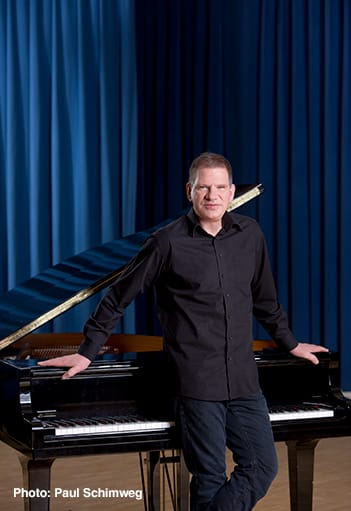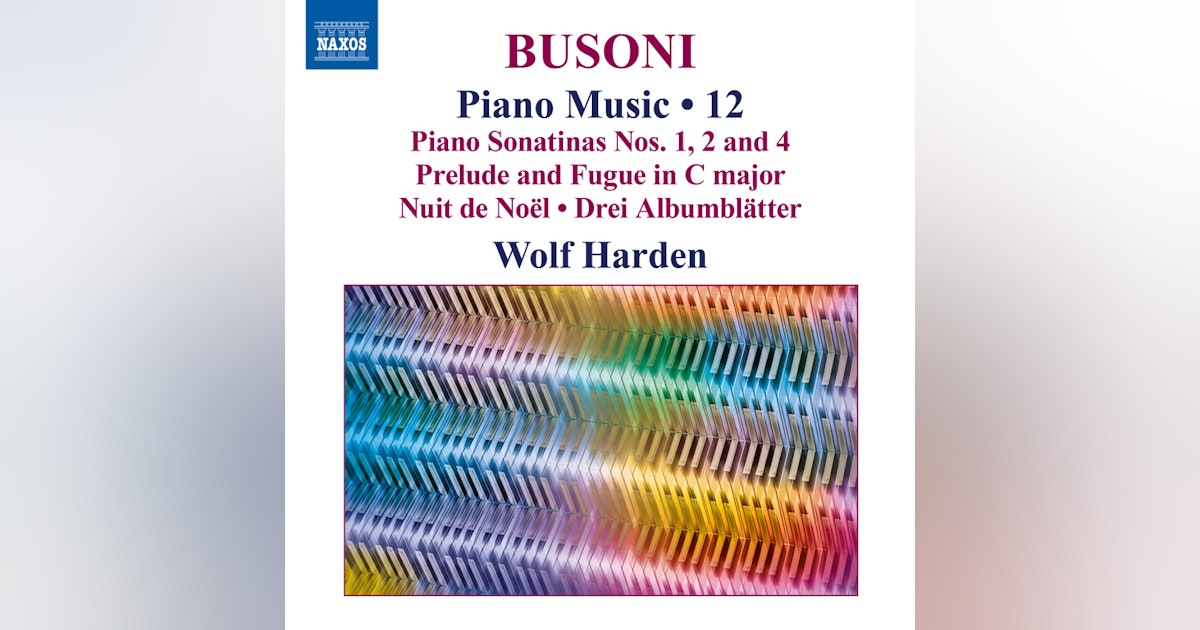Busoni Piano Music #12: the end nears
A superb, varied disc notable for both pianism and recording quality

It is the centenary of Busoni's death (1866-1924), and recordings, if not quite as omnipresent as some would like, are certainly increasing. On Classical Explorer, we've previously looked at Busoni's Violin Concerto on Chandos with Francesca Dego, and his huge Piano Concerto (on Hänssler, incidentally recently performed here in London), plus the Bach/Busoni chorale prelude Nun komm der Heiden Heiland, performed live by pianist Illia Ovcharenko in Gstaad.
My previous reviews of several other volumes from Wolf Harden's series of piano music on Naxos (of which Volume 12 forms the penultimate instalment) can be found at these links: Volume 3, Volume 4, Volume 5, Volume 6, Volume 8.
Having published the first of Classical Explorer's 2024 Christmas crop, Benjamin Appl's The Christmas Album, it seems fitting that this volume contains a piece called Nuit de Noël (Christmas Night), BV 251, written in 1908 and subtitled “Esquisse for piano”. This is a calm, interior meditation on Christmas: any bells are muted recollections:
Interestingly I find Harden more compelling than Igor Levit on Sony: Levit is a minute faster than Harden, and the effect is rather more superficial:
The volume begins with a Prelude and Fugue in C-Major (BV 380, dating from 1880/1). Harden's performance works perfectly, the ongoing tread of the Prelude superbly done (as are the voicing of inner lines). The strong statement of the Fugue subject could announce a Bach piece; Harden delineates it superbly, and what fine trills!:

We certainly hit Busoni proper, with that delicious, individual, mystical chromaticism of his, in the Piano Sonatina No. 1, BV 237 (1901). The work's length perhaps belies its designation as a sonata-diminutive (it is cast in one movement and lasts nearly 13 minutes). A set of variations on a theme that is only really hinted at, it recycles material from an earlier Suite (An die Jugend, BV 254), emerging as a cogent whole. Harden understands each line, each harmony, each Affekt, each mood, perfectly, and he takes Busoni's more finger-twisting moments in their stride.
Honors are evenly split here, I think, between Harden and Marc-André Hamelin (Hyperion), who has himself made quite an imprint on the Busoni discography:
The Naxos discs puts the Second Sonatina (BV 259, 1912) straight after. Written for the great Mark Hambourg (whose Liszt, if bought out, may well change your life: here's Hambourg's complete Hungarian Rhapsodies, listen and, probably literally, knock yourself out), this Second Sonatina Busoni at Scriabinesque levels of mysticism - and indeed material from the Second Sonatina does find its way into Busoni's opera Doktor Faust. Determined left-hand octaves seem to reach back to the disc's opening Prelude and Fugue before veering off into more dissonant territory. This is a magnificent work, and Harden finds its dark core perfectly. Apart from Scriabin, late Liszt also comes to mind:
It is a rather nice idea to separate the Second and Fourth Sonatinas by a Busoni transcription, this time of a work by Schoenberg, the slow second of that composer's Drei Klavierstücke, Op. 11 in a “concert version,” with some registrar openings out and the odd added timbral contrast. The fantastical trills around the seven-minute nark are so effective under Harden's fingers. In fact he plays the whole piece magnificently, although poor old YouTube's algorithms have a hard time classifying the piece, calling it a Rondo brilliant. That it certainly ain't!. It's because its digital knickers twist at “BV 97” against “BV B 97”: “BV” is “Busoni Verzeichnis” (Busoni catalogue) and indeed No. 97 is the Rondo brilliant. But “BV B” is “Busoni Verzeichnis Bearbeiung” (Busoni Catalogue Adaptation), used to classify the composer's transcriptions and cadenzas. So here is the Schoenberg/Busoni:
Another piece with a Christmas association is the Fourth Sonatina, “in diem natavitatis Christi MCMXVII”. As the composer moves towards his “Junge Klassizität,” textures and harmonies become cleaner and more transparent. Harden is able to add an extra glow to the harmonies via careful touch and voicing, plus a real awareness and tendresse of phrase. The move to a more active celebration of Christmas is beautifully handled, both by Busoni (who retains his own identity throughout) and Harden's superb pianism:
.. and here's a performance by Jeni Slotchiver which I include as it contains a scrolling score:
Finally, Drei Albumblätter (Three Album Leaves), BV 289 (1917/21), premiered by the composer in London's cherished Wigmore Hall in 1922. The first has an oscillating figure that, albeit reconextualised into altogether cosier surroundings, seems to in this context refer back to the Schoenberg earlier. The first Albumblatt is astonishingly beautiful throughout, and Harden imparts it with a sense of wonder:
The dry counterpoint of the second sits in high contrast, and Harden makes the most of it in this lovely reading. He paces it perfectly, too (the marking is Andante):
That piece opens in markedly Bachian manner, but the most overt reference to JSB is in the final (and more extended) third piece, marked “Sostenuto religioso” and with the subtitle, “In der Art eines Claviervorspiels” (In the style of a Chorale Prelude). Busoni at his most masterful, one might say, the part-writing perfectly judged, and how wonderfully Harden realises it, not last in his legato across all registers and lines:
A superb, varied disc; this is also one of Naxos' best actual piano recordings. The venue was at Wyastone Concert Hall, Monmouth; John Taylor was both producer and engineer.
At the time of writing, this disc is 24% off at Amazon at this link. Streaming links below.


